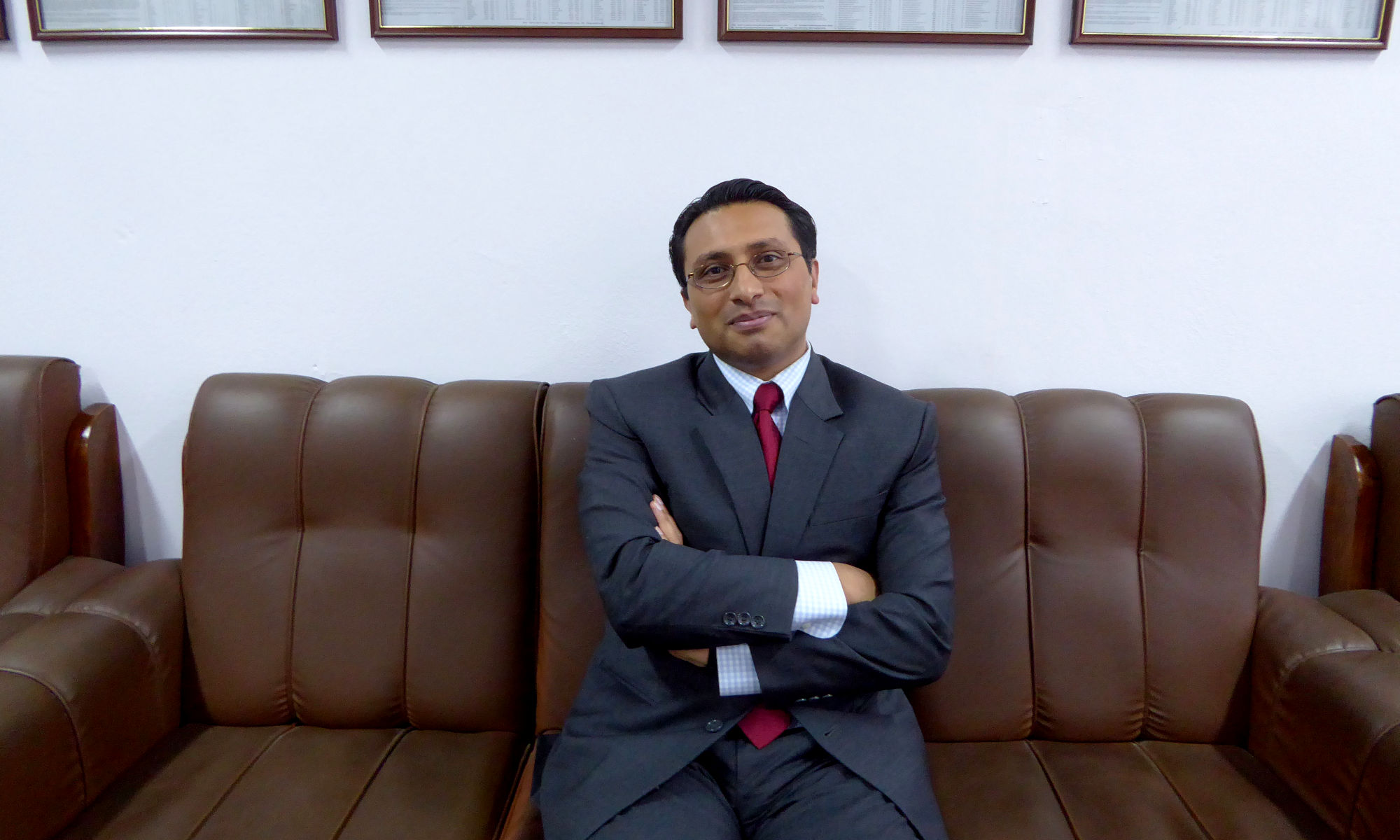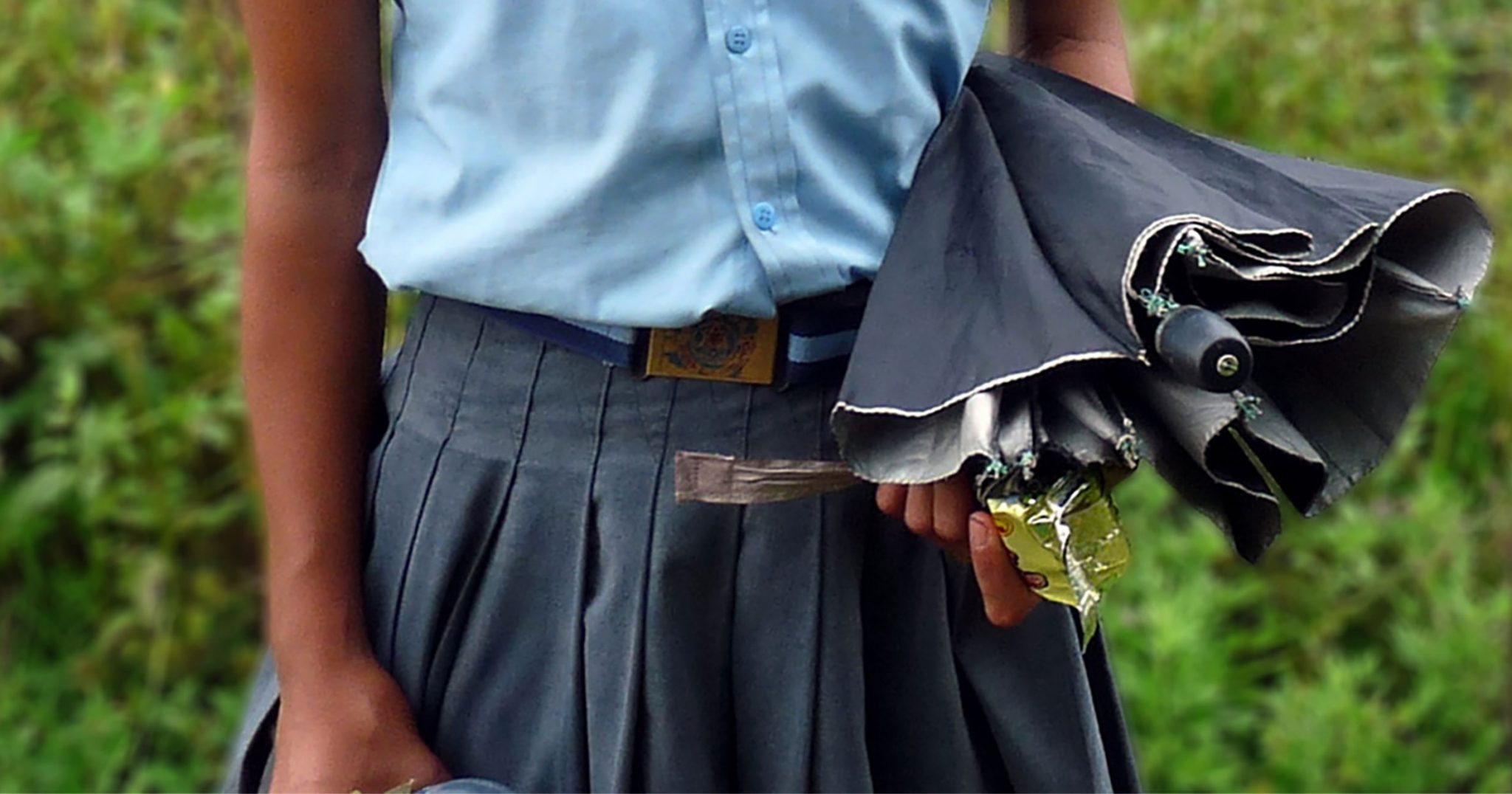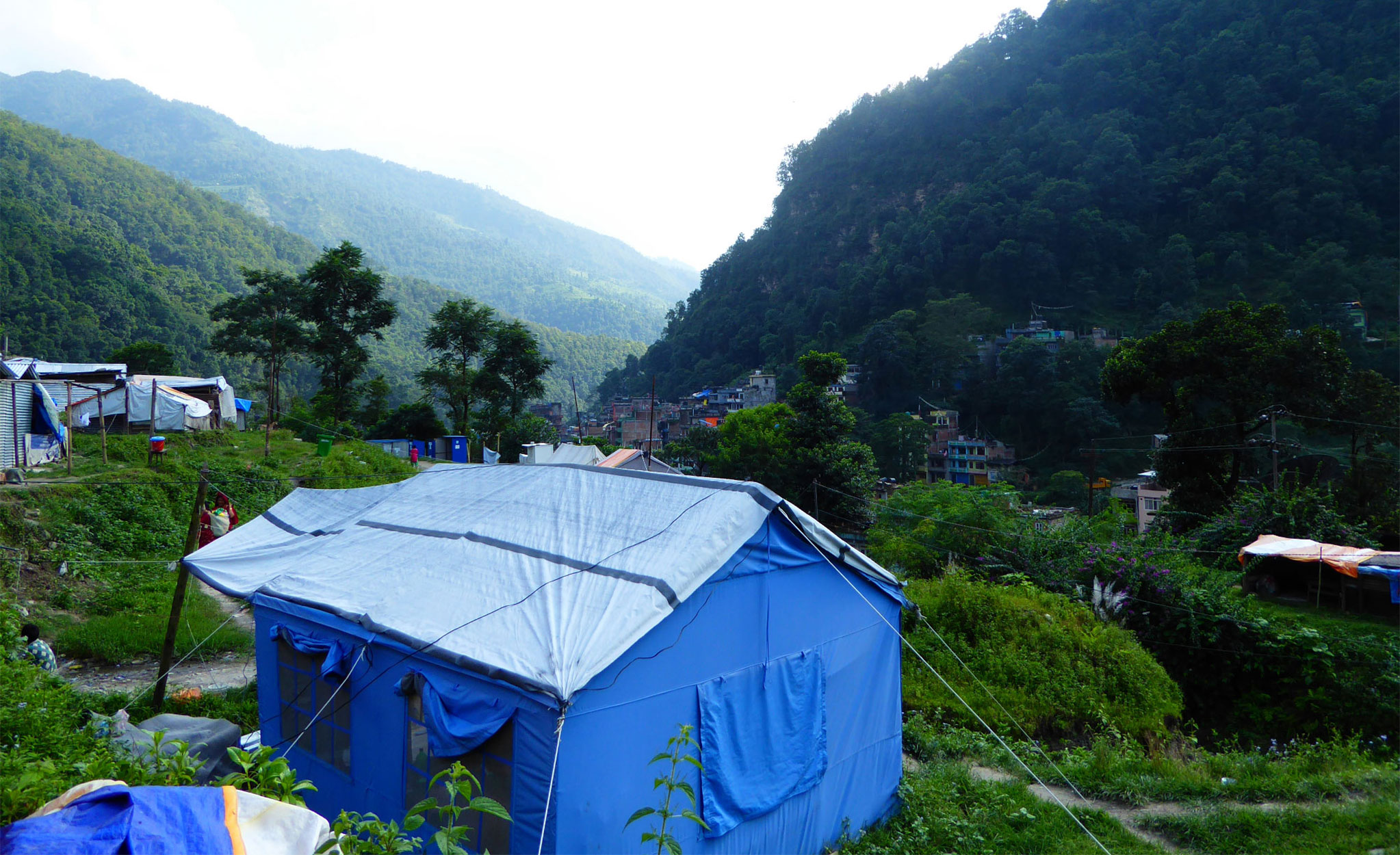The reconstruction of Nepal following the earthquake is a mammoth task, and one of the government’s initial responses was the Post Disaster Needs Assessment (PDNA), co-led by senior government policymaker Dr Swarnim Wagle. This document, produced over a matter of weeks and presented at the international donor conference on June 25, gave a detailed account of the damage to the various sectors of Nepal’s society, and action plans for the future, setting out how reconstruction, economic reform and planning for further disasters should take shape. One of its recommendations was for the establishment of a National Authority for Reconstruction to oversee the recovery. The NAR is yet to be formally adopted by parliament, and its CEO, Govind Raj Pokharel, was only appointed by then Prime Minister Sushil Koirala in mid-August. Dr Wagle, a member of the National Planning Commission, spoke with Patrick Ward about the PDNA, the problems of recovery, and the future challenges for Nepal.
How would you say the progress of the recovery is going since you published the Post Disaster Needs Assessment in June?
The National Planning Commission (NPC) was very active for the first two months. I don’t think the government of Nepal has ever undertaken something of this magnitude. It coordinated nearly 500 experts, almost 30 development partners, under the leadership of the government ministries. We organised all these experts in 23 groups and we managed to get something useful, something coherent, in the form of the PDNA in three to four weeks.
The big question we were asked was, even through a regular budget system, you’re not able to spend all your money. We probably spend only 80 per cent of the government department budget in a year. There are lots of hurdles, procurement bottlenecks. It’s a separate issue; we need to fix it over time. But the question we got was, if you are going to use the same machinery to do reconstruction, and you’re pumping in billions of additional dollars, how can you assure us money will actually be spent?
So we had to design an alternative system to assure our development partners that we’ll do things differently. So the design of the extraordinary mechanism, which took the form of the National Authority for Reconstruction, was also done by the NPC. So those were the things we were tasked to do and we delivered. Unfortunately, the NPC is basically an advisory board. We are not an executive or implementing body. After that, I admit that there has been a bit of a slowdown in momentum, because it essentially became a political decision. So we were a bit disappointed in the time it took for Prime Minister Koirala to make up his mind. But it is also a very fluid political situation. You can’t afford to alienate any political party. He could have just gone ahead and appointed a CEO, but that CEO would not be credible or strong if there wasn’t sufficient buy-in by other political parties. So I think he took his time to make sure whoever he appointed would also be supported by other political parties. That ended up taking a lot of time, and that affected at least the perception that the reconstruction hadn’t picked up.
The other hiccup has been the ordinance that created the NAR, which should have been converted into an act of parliament within 60 days. Because the country was so focused on the constitution, and given the problems in the Terai and Kailali [where protests and strikes for constitutional rights are on], I think it’s just slipped the calendar scheduling. The government did its part and everything was sent to the parliament. But I think somewhere in the calendar of the parliament itself it slipped, and so the 60-day window was missed.
So the international aid money still has not been transferred to the NAR because of this?
Well, that’s half true and half false. The pledging was about $4 bn. That was just a pledge. The pledges now need to be converted into concrete projects. [Some of the] donors are in the business of development in a professional manner, such as the World Bank or the Asian Development Bank. They were very quick. They have converted their pledges to concrete projects already. The World Bank has a massive housing project that has already been signed by the Ministry of Finance. In the Ministry of Finance there’s a foreign aid coordination division, the International Economic Cooperation Coordination Department. The joint secretary is Mr Madhu Marasini. So he’s been talking with all sorts of donors over the last two, three months. World Bank has already been signed. ADB has a big project on education that has already been signed, I think. And they want to do more.
But it takes time. For the Chinese, for example, they’re in the diplomatic business, right? They’re not used to doing development. Even India, which was the largest contributor, they don’t do traditional development like the World Bank does. So they would need to get things going with the help of professionals, that they might bring or they might hire locally, to convert their commitments into concrete projects. That might take time, but that will happen in a sequenced manner.
But the fact that we’ll have a functioning NAR will definitely help. The final signing will happen at the Ministry of Finance, but on the substance—is housing a priority, or education a priority?—on those issues it would have helped the donors to be able to do a substantive dialogue with the Authority. The issue is, it’s not like the relief-rescue phase, where you just disperse the cash. You have to adapt a more thoughtful process, bring in all the institutional checks and balances, modes of accountability and transparency. This is going to be multi-year—up to five years—so it’s going to be big. But the process has begun, it’s not that because the Authority has not hit the ground running, everything is at a standstill. That’s not the case at all.

This school in Harisiddhi is still in use, but has serious structural damage, months after the quake. Future-proofing new buildings is a major part of plans for reconstruction. Photo: Patrick Ward
Another earthquake is expected sometime in the future. Are you confident that after these five years, or however long it takes, Nepal will be prepared for that?
Absolutely, that’s the core principle. The NPC has already come up with a reconstruction policy and from now on all the houses that will be rebuilt—hundreds of thousands of houses—will all have to be earthquake resistant. And not just earthquake resistant, we are already mindful of other hazards that Nepal is prone to. Landslides, you really can’t protect against unless you move the settlement itself, but fires and other hazards that Nepal is prone to. I think that those things will be taken care of in the new housing designs that will be endorsed and supported by the Authority.
The last disaster of this magnitude was 80 years ago. You can see that even between April 25th and May 12th, the two big earthquakes, I think the government was much better prepared after May 12th in terms of communicating with the public and getting the news out. April 25th did come as a shock. People knew the earthquake was coming, but unless you know the particular date—what the Americans call “actionable intelligence”—there was no actionable intelligence. The Americans knew some kind of terrorist attack would happen of the kind that happened on 9/11, but if you didn’t know it was going to happen on 9/11 there was very little you could do.
But I think Nepal has been jolted. We lived through it, we felt the minute-long vibrations, which was terrifying. So I think there is definitely going to be better preparation, but things that need to be done institutionally—a disaster management authority, the earthquake preparedness—that needs to be internalised in school curricular. The drills that you need to do, the large amount of training that we need to do, for the police and the army, right now it’s happening in piecemeal and much smaller scale. But now we have to take on this challenge in a more routinised, institutionalised manner, and I think that awakening is there now.
Several of the aid agencies we have spoken to have said that while the government and authorities here did offer facilitation and assistance to their work, they had some obstacles with the bureaucracy involved, and with the need to pay taxes and import duties on relief supplies coming into Nepal. What do you know about that?
There was an issue during the relief and rescue phase, in the first few months. There were some issues over whether some consignments were eligible for duty waivers. The first thing to note is that it would have been very difficult for the government to just say, OK, free for all then, just come in. So it was necessary to put in place certain guidelines. That’s what the Ministry of Finance did.
“You don’t show up in a sovereign country and expect a red carpet treatment and say ‘no questions asked’”
Problems were exaggerated as well I think, because there’s a 2007 convention on humanitarian assistance. If NGOs, the big ones, whose whole existence is to do humanitarian work, charity work, if they had registered their name within this framework, those guys would not have been affected at all. So they could have brought in whatever relief material they could, duty free. For others, there was a guideline put in place to declare, what have you brought? Where do you intend to go with it? The basic questions. You don’t show up in a sovereign country and expect a red carpet treatment and say ‘no questions asked’.
Even when certain basic guidelines were put in place there was a lot of abuse. We saw people were already importing commercial merchandise as humanitarian goods—big companies—and in Nepal the revenue need is very high. So for six weeks, seven weeks, it was completely relaxed. All you had to do was declare and then schedule things through. But the kind of requests we were getting from other development partners to make all the relief works free of taxes, that wouldn’t have been tenable to the system for a long time. It’s easy to be sentimentally driven—oh, it’s a humanitarian crisis!—but those guys aren’t the custodians of the nation’s treasury.
You mention in the PDNA the need for economic reforms—what do you mean by that, and is there the political will to undertake them?
There’s political support, of course. There’s second generation reform we need to do. In the early-1990s the big opening-up happened, but now we need to do more on the regulatory front. So we have given sufficient space to the market. An efficient well-functioning market economy also needs supervision and regulation of the government, and we’ve been lacking on that. A lot of perversions in the system, car tailing and syndicates, I think those things have to be taken care of in the next phase of reforms, but this has to be supported by a stable political regime.
The other thing on the economic front is really when we’re looking at reconstruction. There are five concrete building blocks. First is, of course, to rebuild private houses, community assets. Second is to focus on the infrastructure, physical and social infrastructure. The third is we need a distinct agenda for our heritage sites and heritage settlements, because people perceive reconstruction as just rebuilding physical things. So the first three are somehow physical, getting things back up, but we don’t want to ignore the social and economic agenda. It’s a huge opportunity for us to do things differently and to use reconstruction as a source of capital formation that will pave the way for future growth, not just urban areas. If you look at the ethno-geography of the crisis, certain communities have been hit particularly badly. If you look at the geography, this is often almost the Himalayan belt. It’s not immediately accessible. You have to walk, it’s a difficult terrain. I think the issue of vulnerability and livelihoods, getting livelihoods going, is very important. We need a distinct programme on that, so I hope the Authority will bring programmes of that nature as well. So it’s not just physical reconstruction.
The fifth one we’re looking at is really economic revival. We want rural centres. So issues of integrated settlements, clustering, not just in isolation but one rural cluster interconnected with another rural cluster. They can become rural centres of growth. Right now, we write off the rural areas. We say they can’t be dynamic sources of economic growth, it’s just paddy production or wheat production, agricultural. But I think there’s enough, if we envision it right, to really plan these things. These rural centres, once the resettlement happens, once the clustering happens, and once the planning of the provisioning of the amenities happen around those integrated, more efficient settlements, I think they really can become semi-urban areas as a source of growth themselves.
But to support that at the national level, the second generation reforms have to be pursued, and the work on that is going on. There are almost 40 pieces of legislation at different stages of maturity. Some are already in the parliament, some policies have already been cleared by the cabinet, but in a democracy it’s a lot of back and forth. NPC has to give some consent, the Ministry of Law has to look at the legal implications, the Ministry of Finance has to look at the financial implications. So there are lots of things flying in the air but at different stages. If we were a less democratic country, we could just announce these things in a second, second generation reforms, big bang, here are the things that will come into operation tomorrow. But that’s not the luxury we have. This is the proper way to do it, to make sure all the perspectives are incorporated.
This is partly related to reconstruction. But even without the crisis, without the disaster, this is something we should be doing anyway. We were delayed by the decade-long conflict and now we are finally back on track with a new constitution in place, I hope. People can finally focus on the economic agenda and support that higher ambition of putting Nepal on a higher trajectory of growth. You need to undergird that with the second generation reforms. It’s overdue now.
















